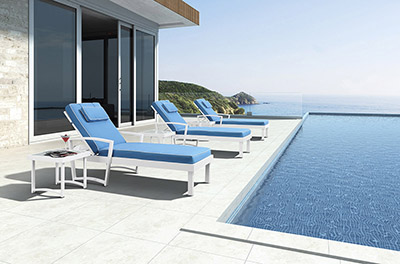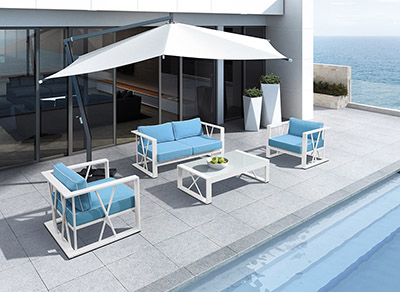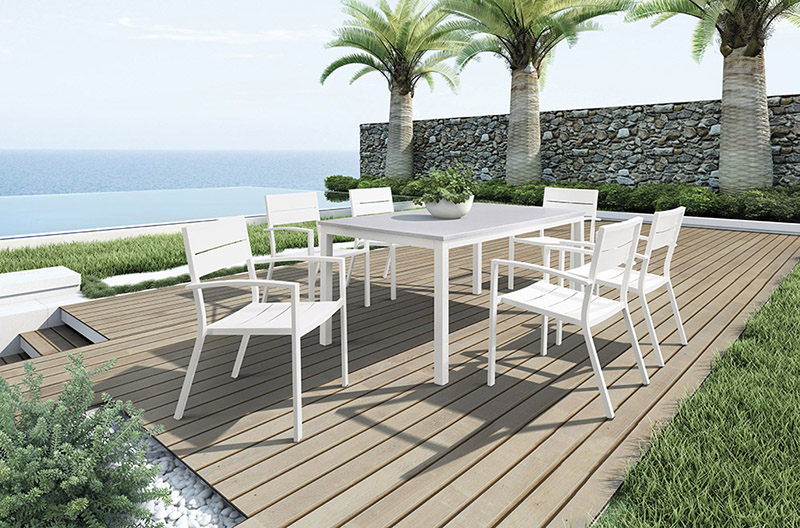There are several types of input devices?
1. Digitizer 2, color scanner (platform and drum type) 3, electronic color separation machine 4, video camera, video recorder and television receiver 5, electronic digital camera
What is the difference and connection between DPI and LPI?
DPI is the inch number used to represent the processing accuracy of the image processing system. It is one of the units for measuring the resolution of the image. Generally, 2*2 pixels or more corresponds to 1 dot, that is, the number of LPI screen lines is the number of lines. About one-half of the DPI number; scanning spots constitute a network, that is, the number of DPI must be greater than the LPI number of 10 to 20 times.
What is a pixel? Resolution?
Pixels are the smallest unit that describes the image in a lattice. Although the pixel is the smallest unit describing the bitmap image, it has a fixed shape but does not have a fixed size. Resolution, representing an image processing device, to represent the fineness of images, prints.
What is color management? What are the contents of color management?
There is an interoperable problem between different software or hardware, how to obtain the expected consistent color under a variety of configuration possibilities, that is, study device-independent color representation, and the conversion of color representation for a specific output device. . There are three major aspects of color management: corrections, features, and transformations.
What is computer direct imaging printing?
Direct-imaging printing is a new type of computer typography printing technology. When coloring this kind of new technology, it does not require the traditional printing process of outputting the film and then the process of making the PS version from the film. The color desktop publishing system is used to edit graphics, photos, texts, and texts. After the image is processed, the image is directly presented on the printing plate for printing. The printing method achieves 1016 DPI resolution with up to 175 lines per inch quality color print.
What is an open system?
Can accept any Chinese system input file, can be output to any English software for processing, the results can be sent to any kind of output device such as: electronic color machine, laser printer, laser imagesetter, computer It can also be output as a PS file, and can be exported to any output center in the world to output four-color CMYK color separation films. This is the concept of full openness. The Postscript language is the foundation.
What does PostScrip do? What are the characteristics?
PostScript language is an interface language output from the desktop system to the layout device. It is specially designed to describe images and text. A variety of desktop software systems work together and must rely on a certain format to exchange information with each other. This is the Postscript language. The function is to record the image text on the page with a digital formula and run it on a computer. Finally, it is translated into a desired output by a Postscript decoder, such as being displayed on a screen or output on a printer or an imagesetter. The Postscript file is just a text-based file that can be used on different computer workstations such as MAC, PC, NEXT, SUN, etc. Features: Ability to comprehensively process text and images; foundation for open desktop publishing systems: With the Postscript standard data format, data exchange is possible between general-purpose computers produced by different manufacturers and various special-purpose computer systems; The dependence of layout production on the use of equipment.
What is the workflow of the color publishing system?
1) Text entry: Enter the text into the computer.
2) Scanning the image: The image is digitized and entered into the computer.
3) Group Edition: After editing and modifying the text and images on the computer, the text and images will be mixed, and the results will be printed out proof proofs.
4) Separation exposure: After raster image processor is used to describe the page description language of the layout into a bitmap image, the dot matrix image is sent to the laser imagesetter to control the sensitivity of the film.
5) Rinse: After the film is sensitized, use the punching machine (developer) to flush the color separation film out of the four-color film.
6) Print Proofing: Provide proofs and proofs for printing reference.
7) Finish color prepress processing. If the material used for separation in the fourth step is PS (pre-sensitized plate), this workflow is called CTP.
What are the general items that are included in the pre-export product quality check?
1, before the output file inspection (laser proofs check)
2, check the layout and finished product size. Single-P or dual-P output problems and verifiable bleeding sites.
3, color map placement and cutting.
1) Check whether the figure is in a horizontal position, especially the visually obvious pictures such as the architectural building diagram, the connected map of Haitian, and the vast plain map.
2) Confirmation of the quality of the bottom of the picture: whether it is refunded according to the requirements, no leakage or retreat, and the retreat shall be sleek.
4, text confirmation: the correctness of the text to reach 100%. The text is big, clear, complete, clear, correct, and correct in color.
5, color blocks, color strip color confirmation.
6, picture blur and gradient quality confirmation 7, spot color color and color sequence confirmation.
8, require the confirmation of the revised part.
Production requirements: (based on the actual departure of film printing)
1. Determine the size of the finished product and the size of the left and right blank areas on the finished product: If the above dimensions are incorrectly identified, you will have to face the fate of re-doing the whole process after investing a lot of time and energy. The workload may be much greater than the amount of work done again;
2. Bleeding: All future objects on the finished product close to the cutting edge position must be placed at least 3 mm beyond the cutting incision. The effect of the object's closeness to the edge of the finished product will be correct after future cutting; ie A small part of objects (pictures, graphics, text, etc.) will be cut out, which is called "bleeding."
3. Image format: Pictures refer to images and graphics. Various types of pictures in computers are divided into two categories: images (also called raster images, bitmaps, and pixel maps): a picture that consists of one pixel The most common is the scanned photograph. The image is processed with specialized image processing software such as PHOTOSHOP. Graphics (also called vector graphics): It is composed of mathematical descriptions of diameters and curves. They do not exist by themselves. They are only created by specialized graphics processing software, such as those created by the drawing softwares such as FREEHAND, COREDRAW, and ILLUSTRATOR. Graphics are vector graphics.
The above two types of pictures are different in nature. The correct picture format should satisfy the following conditions: no loss of file information, small electronic file size, high efficiency when the film is separated from the film, and good versatility (acceptable by most output centers and application software). For images composed of pixels, the most common format is TIFF; for graphics, the most common format is EPS.
4. Image resolution and color space:
To achieve the effect of the printing stage, a fraction of the image resolution should be 1.5 to 2 times the number of line screen printing (of 1: 1 ratio, i.e., pictures are not to zoom in and out). For example, now the general color print is 175 lines/inch, then the size of the image (length and width cm) is determined, the resolution of the image should be 300DPI or 350DPI (number of 327 also need to take, take a multiple of 50 is better) After confirming, after installing the typesetting software, it is in principle required to no longer be able to zoom in or out. If it is absolutely unnecessary, it may be scaled from 10% to 20%. When the image is sent to the photocopy, it should be converted into CMYK color first. Do not use other color spaces such as RGB. All layers and channels should be removed when the image is stored last.
5. The size and color of the graphic:
The size of the graphics should be determined according to the size of the final printed product. Do not zoom in or out after placing the typesetting software (this will increase the time of photocopy output). The color of the graphics is generally marked with CMYK color (this can be expected to be true after printing colour).
6. Text:
If the text does not need special effects, it can't be printed out with image software such as PHOTO SHOP, and then it can be used as an image and then placed into the typesetting software (words printed in this way, the edges are imaginary); the text should generally be entered in the typesetting software, but also Typing in the graphics software, when the graphics containing the text are output in EPS format, select to convert the text into graphic selection items.
7. Registration issues:
Too small colored text or graphics (such as a thin horizontal line), if more than two colors of four primary colors need to be overprinted, blurring may occur because multiple color plates cannot be reprinted together 100%. Therefore, small text or graphics (including colored text, graphics, or colorless text, and graphics printed in two or more color backgrounds) should be as monochromatic as possible.
8. Submit documents before sending to the output center: (taking PAGEMAKER as an example).
(1) Placing a graphic in PAGEMAKER can be completely placed when the graphic is small (such as tens of K or less), that is, the graphic is completely included in the PAGEMAKER file, and the original image can be lost; but when the graphic is large, (If several hundred K, dozens of M, or hundreds of M.), if the graphic is completely inserted, the PAGEMAKER file will be too large to be manipulated and controlled, so when you place the image with an electronic dimension larger than that set by PAGEMAKER When there is a value, a query box appears: Do you include this graphic in PAGEMAKER? You should choose "No" at this time. In this way, PAGEMAKER only puts in a low-resolution pre-view that is obtained from the original but much smaller than the original image. You can operate this view, and its position fully represents the original image. This is called “linkâ€. .
(2) When PAGEMAKER encounters a picture when opening a file, it will search for the original location of the file and search for the file; if no, search the current directory; if not, a message is displayed saying that the picture cannot be found. ! You can choose "Ignore", the page will still be the same, the pre-view is still, the file can be printed, but the resolution of the image is very low, the image is very rough.
(3) To manage the links of all pictures and texts in a file (such as picture updates, replacements, etc.), use the "Link" menu under the "File" menu.
(4) After the publications are arranged, all the pictures must be collected and stored on one or several storage media together with the original PAGEMAKER file to the output center. The PAGEMAKER file should close the reference line to display the results.
Source: PACK.CN
Outdoor aluminum furniture is suit for outdoor patio usage for a long time. The material is 1.2mm , 1.5mm or 2.0mm thickness aluminum frame with powder-coated.
Secure and comfortable structure, simple design but elegance, is popular option for customer. Aluminum frame is welded and polished in meticulous style. Gently angled backs and wide arms encourage restful lounging. The industry`s best high-performing fabrics encase the thick, double-wrapped foam cushions.
· Traditional forms with a spacious, inviting scale
· Rust-resistant powder-coated aluminum frame.
· Comfortable 30 density cushion foam.
· Secure tempered glass for dining table and coffee table.
· Waterproof fabric for cushions.
Outdoor aluminum furniture with high quality and long time guaranty.



If you have any questions, please contact with us directly. Outdoor Aluminum Furniture are produced by Golden Eagle Outdoor Furniture Co.,ltd with High Quality and Good Appearance. Welcome you to visit our Factory for any inquiry, please send mail directly to us.
Aluminium Garden Furniture,Lawn Aluminium Garden Furniture,Outdoor Aluminium Garden Furniturel,Garden Aluminium Garden Furniture
Golden Eagle Outdoor Furniture Co., LTD. , https://www.gebarset.com